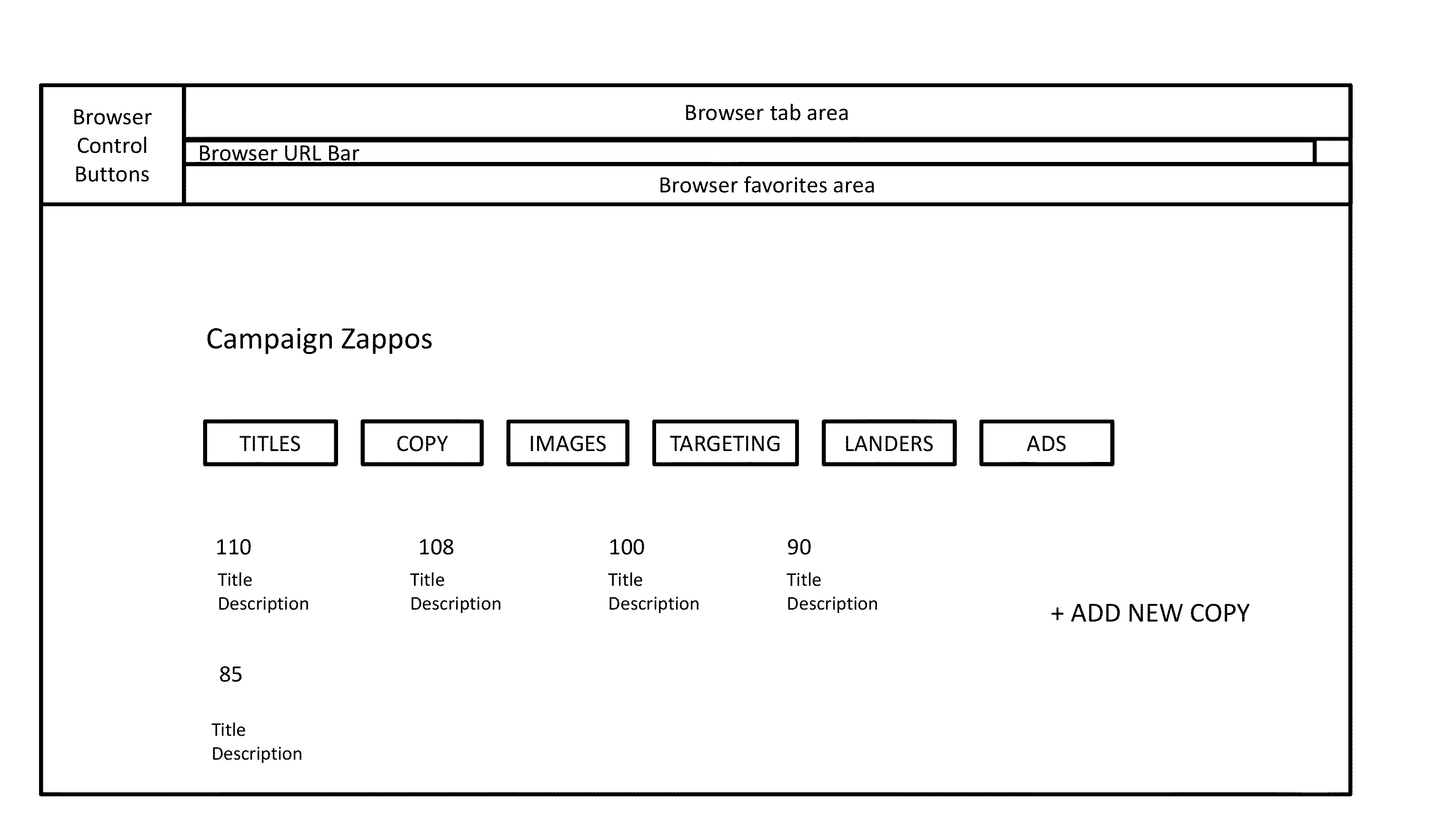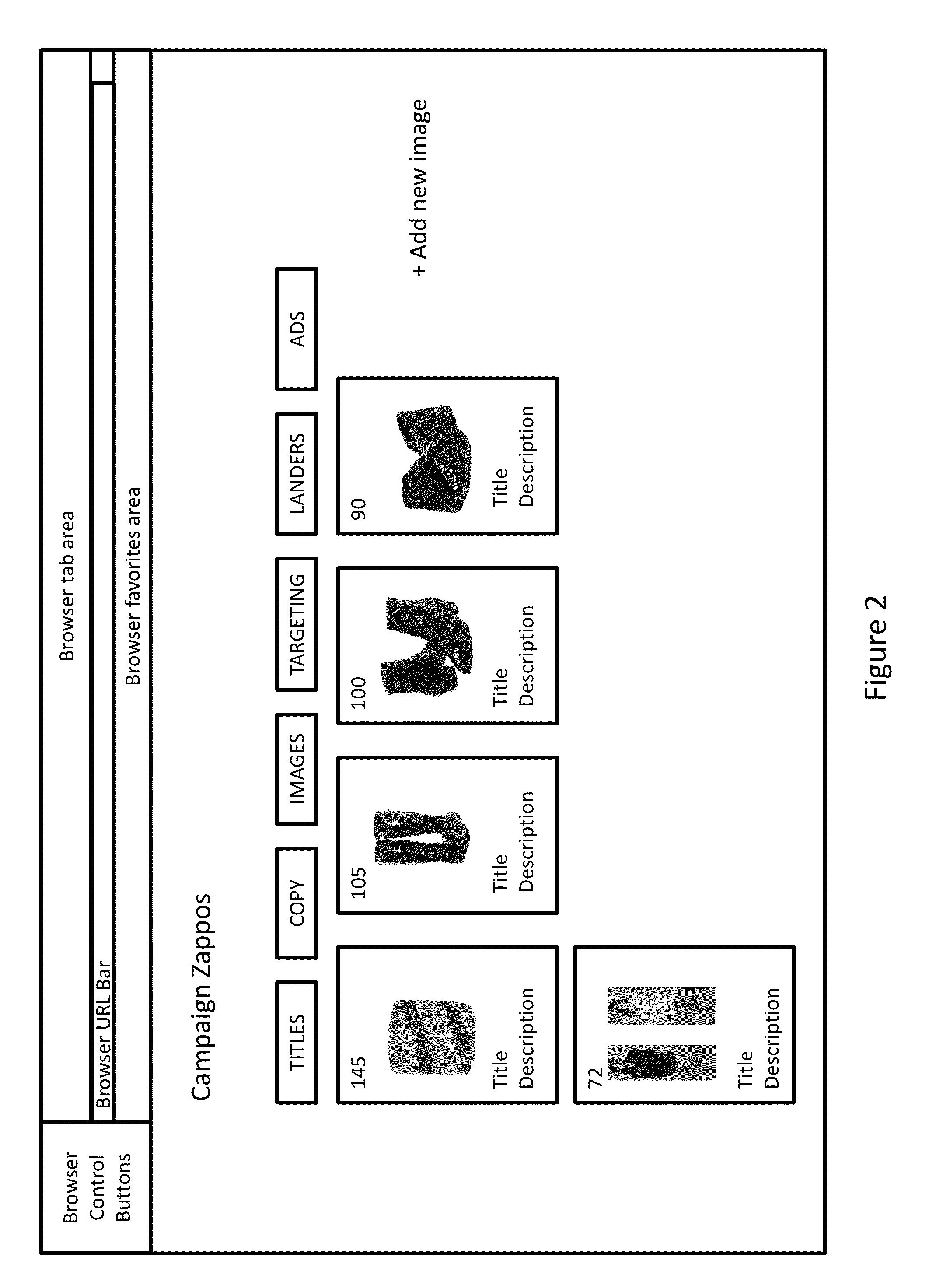Online advertising scoring
a scoring and online advertising technology, applied in the field of online advertising, can solve the problems of increasing the volume of ad impressions, reducing the profitability of the marketer, and increasing the cost per click, so as to facilitate testing, improve the efficiency of online advertising purchases, and optimize results
- Summary
- Abstract
- Description
- Claims
- Application Information
AI Technical Summary
Benefits of technology
Problems solved by technology
Method used
Image
Examples
Embodiment Construction
[0021]The embodiments illustrated in the Figures show an ad creation and ad buying system. In a preferred embodiment, the disclosed system provides a score for each component of one or more advertisements, and determines an optimized cost per click bids for each ad.
[0022]This disclosure first considers the problem of scoring the individual ad components. For the purpose of this disclosure, an online ad includes five ad components, a title; ad copy; an image; a target group; and a destination. However, those skilled in the art will appreciate that those five ad components represent the five most common components of online ads today; deviations in the number of particular ad components or their individual meanings can be made without deviating from the spirit and scope of the invention.
[0023]FIG. 1 illustrates one embodiment of an interface that displays the scores for different ad copy units for a particular campaign in one embodiment of the disclosed system. As illustrated in FIG. ...
PUM
 Login to View More
Login to View More Abstract
Description
Claims
Application Information
 Login to View More
Login to View More - R&D
- Intellectual Property
- Life Sciences
- Materials
- Tech Scout
- Unparalleled Data Quality
- Higher Quality Content
- 60% Fewer Hallucinations
Browse by: Latest US Patents, China's latest patents, Technical Efficacy Thesaurus, Application Domain, Technology Topic, Popular Technical Reports.
© 2025 PatSnap. All rights reserved.Legal|Privacy policy|Modern Slavery Act Transparency Statement|Sitemap|About US| Contact US: help@patsnap.com



